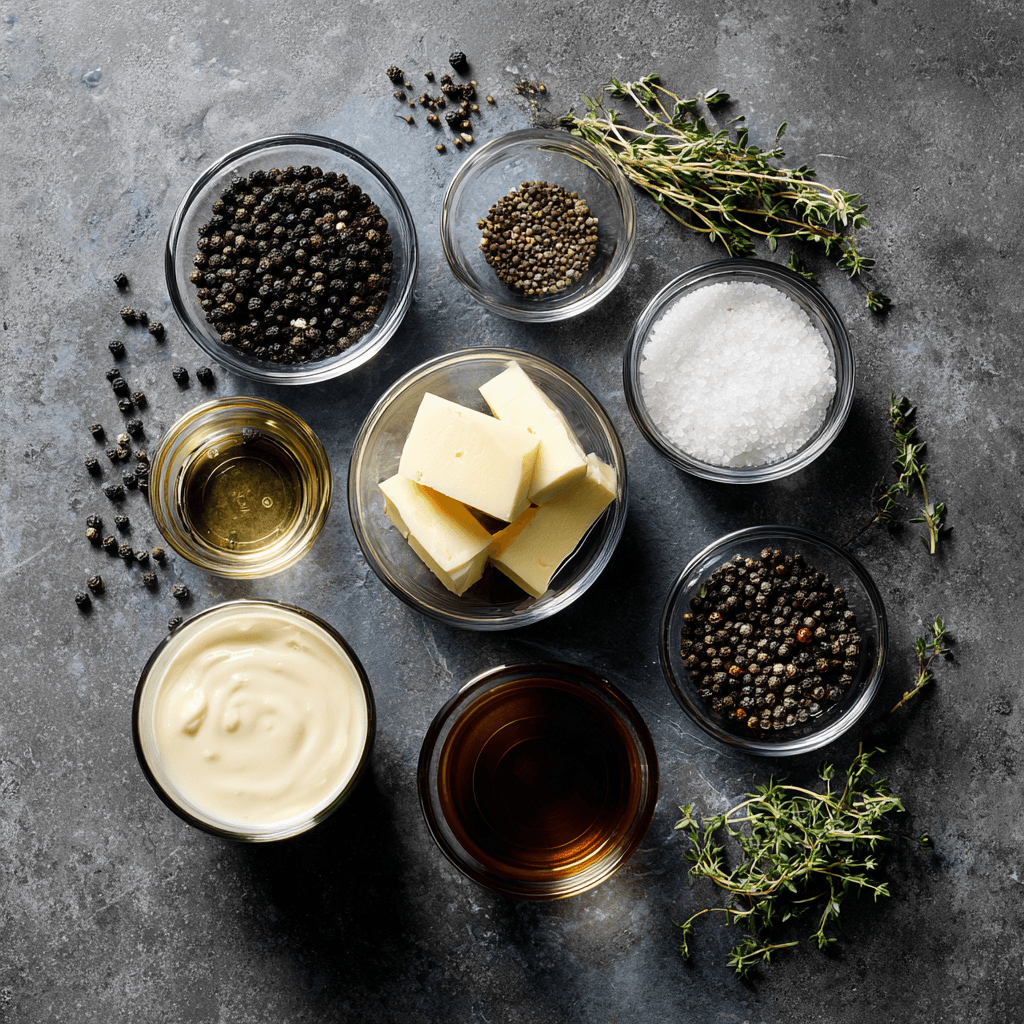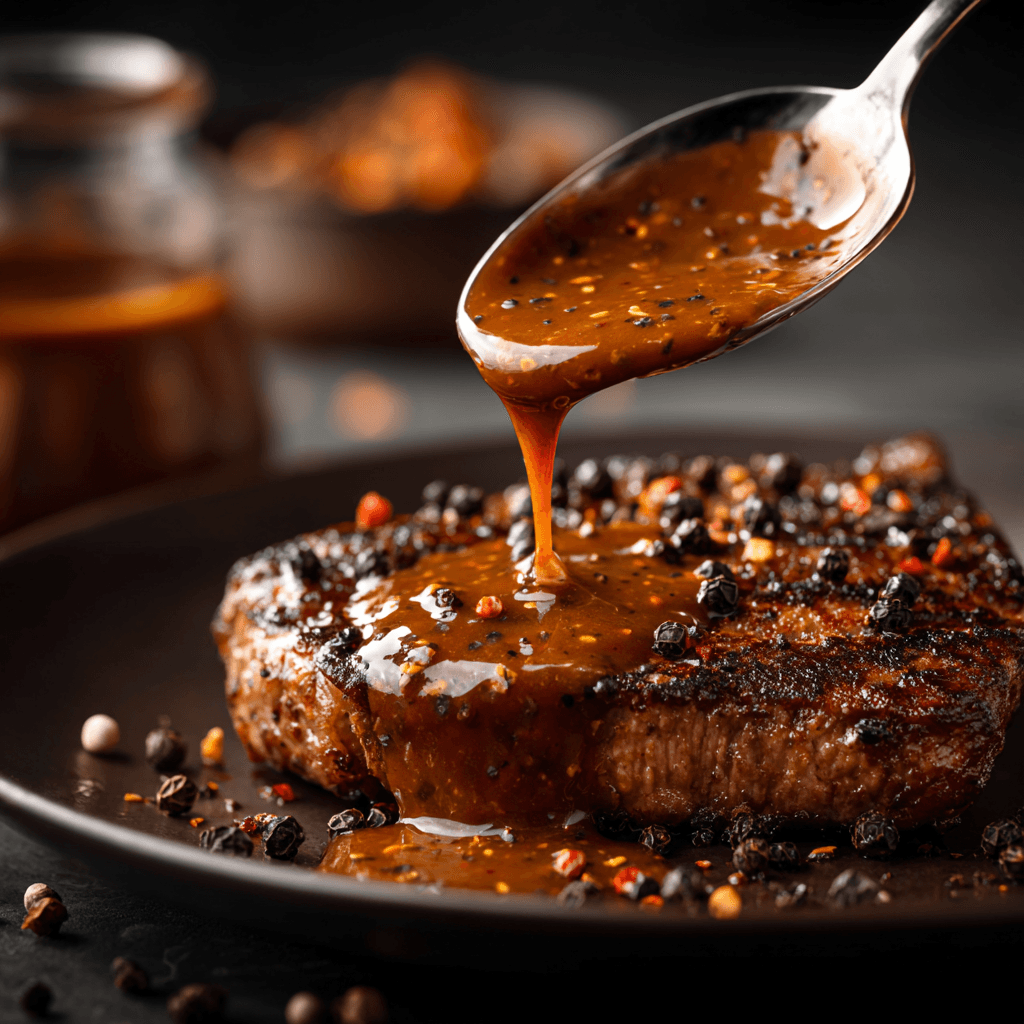I’ll never forget the disaster that was my first attempt at making Gordon Ramsay pepper sauce. Picture this: a former firefighter, confident in the kitchen, watching helplessly as my “foolproof” pepper sauce turned into a curdled, bitter mess that looked more like chunky cottage cheese than the silky, restaurant-quality Gordon Ramsay pepper sauce I’d been dreaming about. That humbling experience taught me that even the simplest-looking sauces require precision and respect for the technique.
After countless attempts and careful study of Gordon’s methods, I’ve cracked the code to creating that perfect balance of heat, richness, and sophistication that makes his pepper sauce legendary. This isn’t just another sauce recipe – it’s your ticket to transforming ordinary weeknight dinners into something truly special.
Why This Gordon Ramsay Pepper Sauce Works (And Where Most Go Wrong)
The magic behind Gordon Ramsay pepper sauce lies in understanding that it’s not about overwhelming heat – it’s about building layers of flavor that complement and enhance your main dish. Most home cooks make three critical mistakes that sabotage their results before they even start.
First, they use pre-ground pepper instead of whole peppercorns. Ground pepper loses its essential oils quickly, leaving you with dusty heat instead of the bright, aromatic punch that makes Gordon Ramsay pepper sauce sing. Always start with whole black peppercorns and crush them just before cooking.
Second, they rush the reduction process. The brandy needs time to cook off its harsh alcohol bite while concentrating its rich, fruity essence. Skip this step, and you’ll end up with a sauce that tastes more like a chemistry experiment than a culinary masterpiece.
Third, they add the cream too quickly or at too high a temperature, causing it to break and curdle. The secret is gentle heat and patience – let the cream integrate slowly, whisking constantly, until you achieve that signature velvety texture that makes Gordon Ramsay pepper sauce so irresistible.
Ingredients That Actually Matter
Not all ingredients are created equal when it comes to Gordon Ramsay pepper sauce. The difference between good and extraordinary lies in these carefully chosen components.
Whole Black Peppercorns: These are your flavor foundation. Look for peppercorns that are uniform in size and have a strong, spicy aroma when crushed. Avoid any that look dusty or have lost their deep black color.
Heavy Cream: This creates the luxurious mouthfeel that makes Gordon Ramsay pepper sauce so memorable. Don’t substitute with half-and-half or milk – you need that fat content for proper texture and richness.
Brandy: This isn’t just for show. The brandy adds depth and complexity that you simply can’t achieve with wine or other spirits. If you’re making a lot of sauces, consider investing in a decent bottle – it makes a noticeable difference in the final product.
Shallots: These provide a milder, more sophisticated onion flavor than regular onions. They cook down beautifully and won’t overpower the delicate pepper notes in your Gordon Ramsay pepper sauce.
The quality of your beef stock matters too. If you’re using homemade beef stock, you’ll notice a significant improvement in depth and richness compared to store-bought versions. For those who enjoy rich, buttery accompaniments, consider pairing this sauce with Gordon Ramsay’s garlic bread for a complete restaurant experience.

Step-by-Step Instructions for Perfect Gordon Ramsay Pepper Sauce
Step 1: Prepare Your Peppercorns Lightly crush your whole black peppercorns using the flat side of a chef’s knife or a small bowl. You want them broken but not powdered – think coarse pieces that will release their oils without creating a gritty texture.
Step 2: Build Your Flavor Base Melt butter in a medium saucepan over medium heat. Add your diced shallots and cook for 2-3 minutes until they’re softened and fragrant. This gentle cooking process sweetens the shallots and creates the aromatic foundation for your Gordon Ramsay pepper sauce.
Step 3: Add the Peppercorns Add your crushed peppercorns to the pan and cook for just 30 seconds until they become fragrant. This brief toasting releases their essential oils without burning them.
Critical Warning: Don’t let the peppercorns burn at this stage – they’ll turn bitter and ruin your entire sauce.
Step 4: The Brandy Reduction Remove the pan from heat (this prevents dangerous flare-ups) and carefully add the brandy. Return to heat and simmer until the brandy reduces by half. This concentrates the flavor while cooking off the harsh alcohol notes.
Step 5: Add Stock and Herbs Pour in your beef stock and add fresh thyme sprigs. Simmer for 3 minutes to allow the flavors to meld. This step is crucial for developing the complex flavor profile that makes Gordon Ramsay pepper sauce so distinctive.
Step 6: The Cream Integration Lower your heat to medium-low and slowly pour in the heavy cream while whisking constantly. This gradual addition prevents curdling and ensures a smooth, velvety texture.
Critical Warning: If your heat is too high or you add the cream too quickly, it will break and curdle. There’s no fixing this – you’ll need to start over.
Step 7: Final Seasoning and Straining Simmer gently until the sauce coats the back of a spoon, about 4-5 minutes. For the smoothest texture, strain through a fine-mesh strainer to remove the peppercorn pieces and herbs. Season with salt to taste.
Pro-Tips That Change the Game
- Temperature Control is Everything: Keep your heat at medium or below once you add the cream. High heat will break your sauce every time.
- The Spoon Test: Your Gordon Ramsay pepper sauce is ready when it coats the back of a spoon and holds its shape when you draw your finger across it.
- Make-Ahead Magic: This sauce reheats beautifully. Store it covered in the refrigerator and reheat gently over low heat, whisking frequently.
- Brandy Substitutions: Cognac works beautifully in place of brandy and adds even more depth to the flavor profile.
- Consistency Control: If your sauce gets too thick, whisk in a tablespoon of warm beef stock. If it’s too thin, simmer a bit longer.
- Pepper Variations: While black peppercorns are traditional, try mixing in a few green peppercorns for a more complex flavor profile.
- Serving Temperature: Serve your Gordon Ramsay pepper sauce warm, not hot. This allows the flavors to shine without overwhelming the palate.
Storage and Leftovers Guidance
Proper storage is crucial for maintaining the quality of your Gordon Ramsay pepper sauce. Store any leftover sauce in an airtight container in the refrigerator for up to 3 days. The sauce will thicken as it cools, which is completely normal.
To reheat, place the sauce in a small saucepan over very low heat, whisking frequently. Add a splash of beef stock or cream if needed to restore the proper consistency. According to USDA food safety guidelines, always ensure your reheated sauce reaches a safe temperature before serving.
Never freeze cream-based sauces like Gordon Ramsay pepper sauce, as they will separate and become grainy when thawed. It’s better to make fresh sauce as needed or store it properly in the refrigerator for short-term use.
If you’re planning to serve this sauce for a dinner party, you can make it several hours ahead and keep it warm in a double boiler or very low slow cooker, stirring occasionally to prevent a skin from forming on the surface.
Comprehensive FAQ Section
How to Make Pepper Sauce Gordon Ramsay Style at Home?
The key to authentic Gordon Ramsay pepper sauce is using whole black peppercorns, quality brandy, and proper technique. Start by crushing fresh peppercorns, sauté them with shallots in butter, deglaze with brandy, add beef stock, and finish with cream. The critical steps are controlling your heat and adding the cream slowly to prevent curdling.
What is the Difference Between Pepper Sauce and Peppercorn Sauce?
Gordon Ramsay pepper sauce and peppercorn sauce are essentially the same thing – both feature crushed peppercorns as the primary flavoring agent in a cream-based sauce. The terms are used interchangeably, though “peppercorn sauce” is more commonly used in fine dining establishments.
How Do You Thicken Up Pepper Sauce?
To thicken Gordon Ramsay pepper sauce, simmer it gently over low heat until it reduces and coats the back of a spoon. If you need it thicker faster, you can whisk in a small amount of butter or create a slurry with a teaspoon of cornstarch mixed with cold cream.
Why is Peppercorn Sauce So Good?
The appeal of Gordon Ramsay pepper sauce lies in its perfect balance of heat, richness, and aromatics. The crushed peppercorns provide a complex spiciness that’s more sophisticated than simple heat, while the cream creates a luxurious mouthfeel that coats and enhances the flavors of your main dish.
This sauce pairs beautifully with hearty dishes and works exceptionally well with grilled meats. For those interested in exploring premium cuts, consider learning about selecting the best venison cuts for special occasions. The rich, peppery notes also complement elegant presentations like beef Wellington using affordable alternatives when you want restaurant-quality results without the premium price tag.
The science behind why this combination works so well involves the way capsaicin (the compound that makes peppers hot) interacts with the fats in cream, creating a balanced sensation that enhances rather than overwhelms your palate. According to food science research, the fat content in cream helps carry and distribute the pepper’s essential oils, creating a more complex and satisfying flavor experience.
Now you have all the knowledge and technique needed to create restaurant-quality Gordon Ramsay pepper sauce in your own kitchen. Remember, like any great sauce, this one rewards patience and attention to detail. Take your time, respect the process, and you’ll be rewarded with a sauce that transforms ordinary meals into extraordinary experiences.
Stay safe,
Jack Sullivan

Gordon Ramsay Pepper Sauce
Ingredients
Equipment
Method
- Crush peppercorns lightly with the flat side of a knife or in a small bowl
- Melt butter in a medium saucepan over medium heat
- Add diced shallots and cook for 2-3 minutes until softened
- Add crushed peppercorns and cook for 30 seconds until fragrant
- Remove pan from heat and carefully add brandy
- Return to heat and simmer until brandy reduces by half
- Add beef stock and thyme, simmer for 3 minutes
- Pour in heavy cream and simmer until sauce thickens, about 4-5 minutes
- Strain through fine-mesh strainer if desired for smoother texture
- Season with salt and serve immediately
Nutrition
Notes
Brandy can be substituted with cognac for deeper flavor
Sauce can be made ahead and reheated gently
Store covered in refrigerator for up to 3 days


